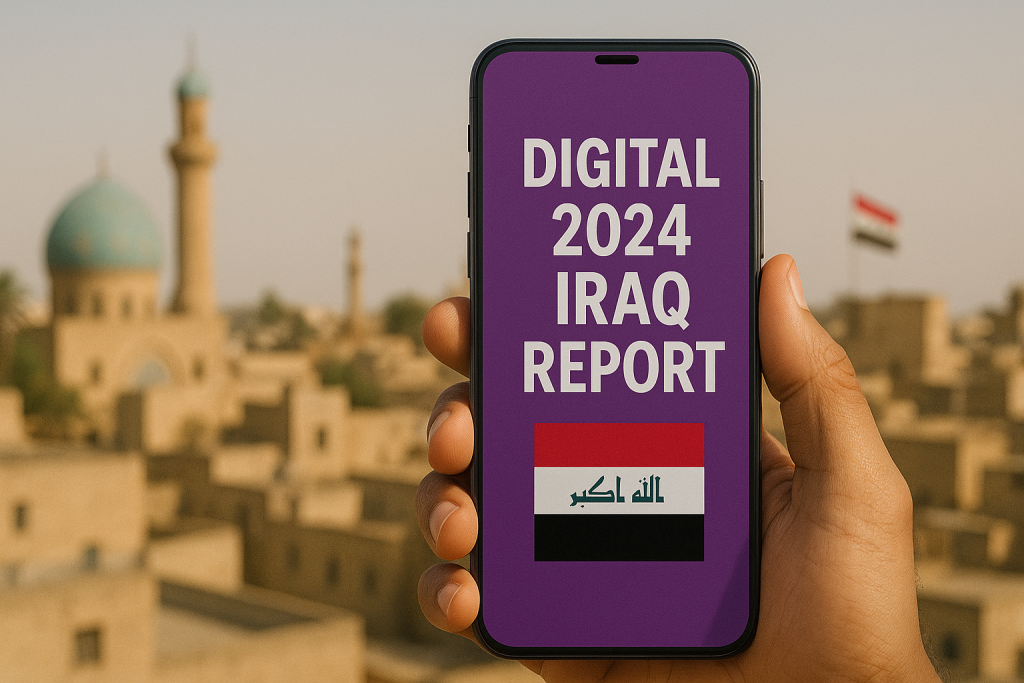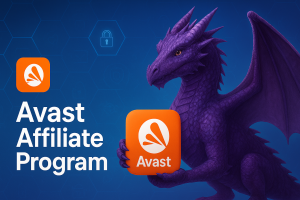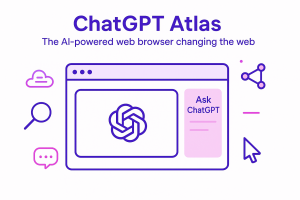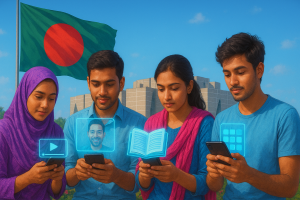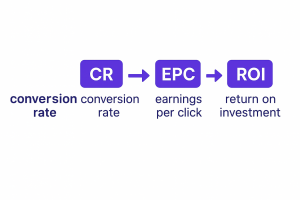Mobile Connections in Iraq
Iraq’s mobile market is approaching saturation, with 46.00 million cellular mobile connections active as of January 2024 – roughly 100% of the population. This marks a modest +0.5% year-on-year increase (+239,000 connections) from early 2023, reflecting a mature market. It’s common for individuals to own multiple SIM cards (e.g. for work and personal use), so the number of connections slightly exceeds unique users. Unique mobile subscriber penetration is estimated around 80% of the population, indicating many Iraqis have at least one mobile phone service.
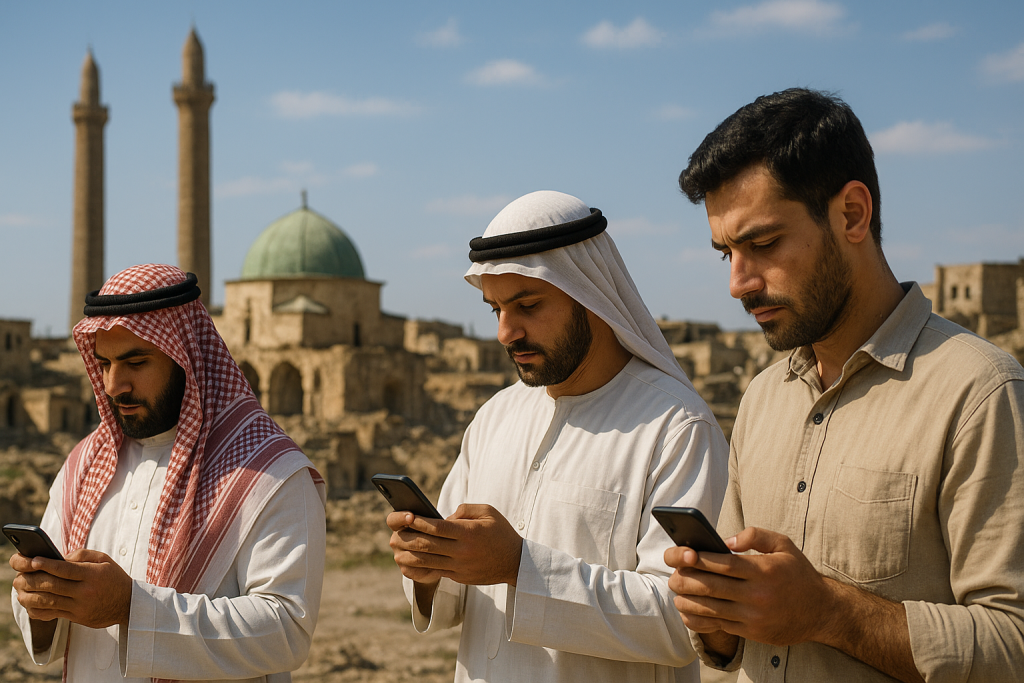
Mobile market share by subscribers (Q4 2022). Zain and Asiacell dominate ~81% of the market, while Korek holds about 19%. Asiacell’s share has since grown further by 2024, capitalizing on Korek’s decline.
Iraq has three major mobile network operators (MNOs): Zain Iraq, Asiacell, and Korek Telecom. As of 2022, Zain held the largest share with 41.9% of subscribers, closely followed by Asiacell at 39.2%, and Korek at 18.9%. Asiacell (part-owned by Ooredoo) reported rapid growth in 2023 – its subscriber base reached 19.1 million by end of 2024 (up 8% YoY), now rivaling or exceeding Zain’s. Zain Iraq had about 15.7 million active customers as of mid-2024 and likely around 17–18 million by year-end (roughly 37%–40% share). Korek Telecom, dominant in the Kurdish region, has struggled: its subscribers fell from 11.6 million in 2015 to 8.2 million in 2022. Korek’s market share shrank to under 20% amid regulatory and financial troubles. In late 2023, Iraq’s regulator even temporarily blocked Korek’s interconnection with other networks over unpaid fees, prompting many Korek users to obtain second SIMs or switch to Zain/Asiacell. Overall, Iraq’s total mobile subscriber base grew from ~40.7 million in 2021 to 45.7 million in 2023, a significant jump as stability improved and taxes on mobile service were cut. Looking ahead, 4G adoption remains the focus (Korek launched 4G only in 2021), and a new 5G license was awarded to a state-run operator (Al-Salam) in 2023, which could introduce fresh competition in coming years. For now, Zain and Asiacell comfortably dominate Iraq’s mobile landscape.
Mobile Value-Added Services (MVAS)
Iraq’s operators have expanded beyond voice and data into a variety of mobile value-added services to drive usage and diversify revenue. Mobile financial services are a major MVAS focus. Asiacell pioneered Iraq’s first mobile money platform AsiaHawala in late 2015. AsiaHawala (in partnership with fintech firm Mahindra Comviva) allows users to create a mobile wallet linked to their phone number for transferring money, receiving salaries or aid, bill payments, mobile top-ups, online shopping, and more. Similarly, Zain Iraq launched Zain Cash in 2016, a wallet service offered via its subsidiary Iraq Wallet and licensed by the Central Bank of Iraq. Zain Cash users can send/receive money, pay bills, and shop digitally through an app linked to their SIM, and the service has achieved over 1.2 million app downloads with 10,000 agent outlets nationwide to facilitate cash-in/out. Other independent e-wallets like NassWallet, FastPay, and NeoPay have also entered the market, reflecting a growing fintech ecosystem. Despite this progress, cash remains “king” in Iraq – fewer than 20% of Iraqis have a bank account, and many are initially hesitant to trust digital payments. Still, mobile wallets are gaining traction for specific needs (for example, humanitarian agencies use AsiaHawala and Zain Cash to deliver aid to refugees and unbanked populations). The Central Bank has licensed 17 e-payment providers so far, signaling government support for a cashless transition, though widespread adoption will require time and trust-building.
Beyond fintech, Iraqi operators offer a rich menu of entertainment, educational, and even health-related services through mobile. Both Zain and Asiacell have partnered with content providers to turn the phone into an infotainment hub:
- Streaming Video & Music: Zain Iraq enables subscriptions to popular OTT platforms directly via mobile balance – for instance, Shahid VIP (the largest Arabic streaming library) and STARZPLAY (western movies/series in HD) are offered to Zain customers with carrier billing. Zain also offers Anghami Plus, a premium music streaming service, with subscription fees deducted from airtime. Asiacell similarly launched Shofha (“Watch it”), an all-in-one video portal for Arabic movies, series, sports and more, available by subscription. These services make it easy for users to enjoy premium video content without credit cards, leveraging the telecom account instead.
- Mobile Gaming & Apps: Recognizing Iraq’s youthful population, operators provide gaming and app services. Both Asiacell and Zain partnered with popular mobile games to sell in-app credits via SMS or balance. For example, Asiacell users can purchase Garena Free Fire diamonds and Yalla Ludo coins using their airtime (via a service called “YallaPay”) – a first in Iraq for mobile game payments. Zain offers a similar “Zain Games” store and has even inked e-sports deals (e.g. with PUBG’s publisher) to bolster its gaming profile. Both operators host game portals like Gameasy (with titles from Disney, Marvel, etc.) and exclusive offers for mobile gamers. Additionally, they facilitate app purchases: Zain launched direct carrier billing for Google Play and the Huawei AppGallery, allowing Android users to buy apps, games, and themes by charging their phone bill. This has broadened access to paid digital content in a country where international payment methods are not universal.
- Health and Lifestyle: Operators have dabbled in health-related VAS primarily via informational services and insurance. Zain Iraq introduced “Salamtak” personal accident insurance for subscribers, an affordable micro-insurance service to provide coverage for unforeseen events. Asiacell offers “Jamalok”, a women’s lifestyle portal with wellness, beauty and health content via articles/videos tailored to female subscribers. While full telemedicine services are not yet mainstream via telcos, these offerings show movement toward leveraging mobile for health education and personal safety nets.
- Education and Youth Services: Education is another MVAS domain. During and after the COVID-19 period, telcos have offered e-learning content and platforms. Asiacell’s “Mobile Academy” is an interactive mobile education service with a library of courses and lessons on various topics, accessible via SMS/IVR for a daily fee. Zain launched a similar initiative called “Sadeem” – a suite of educational mobile apps and content for students – as part of its support to the education sector. Additionally, Zain’s “KidSpace” app and Asiacell’s Gameloft Kids partnership provide child-friendly educational games, stories, and parental control features, marrying learning with entertainment. These services aim to make learning fun and accessible on mobile devices.
- Government and Public Services via Mobile: In terms of e-government MVAS, Iraq is still in nascent stages. There have been initial steps like enabling certain bill payments through mobile wallets (e.g. paying utilities or government fees via Zain Cash or AsiaHawala), but large-scale government services on mobile are limited. The cancellation of the 20% telecom tax in 2022 is one example of policy enabling greater usage. The telecom regulator CMC has focused more on expanding coverage and issuing licenses (e.g. a fourth, state-run 5G operator) than on SMS government services. That said, as mobile financial services mature, we can expect more integration with public sectors (for instance, disbursing pensions or social welfare through mobile wallets). In summary, while mobile government services in Iraq remain minimal today, the groundwork (digital payment infrastructure and high mobile penetration) is being laid for future development.
Overall, MVAS in Iraq is on a growth trajectory. Mobile money offerings by Asiacell and Zain are steadily picking up users (Zain Cash’s 1.2M downloads hint at rising adoption), especially among the young, urban population and for specific needs like remittances and e-commerce. Entertainment VAS are very popular – Iraqis heavily consume social media, video, and games on their smartphones, so telcos’ partnerships with OTT video (StarzPlay, Shahid), music (Anghami), and gaming platforms are tapping into this demand. Educational and health services are smaller-scale but play a role in differentiating operator offerings and fulfilling corporate social responsibility goals (e.g. supporting digital literacy, wellness). We can expect operators to continue expanding MVAS portfolios, especially as Iraq’s digital economy grows and more customers come online.
Social Media Usage
Active social media users by platform in Iraq (Jan 2024). TikTok leads in reach (especially among 18+), followed by YouTube, Facebook, and Instagram in total users.
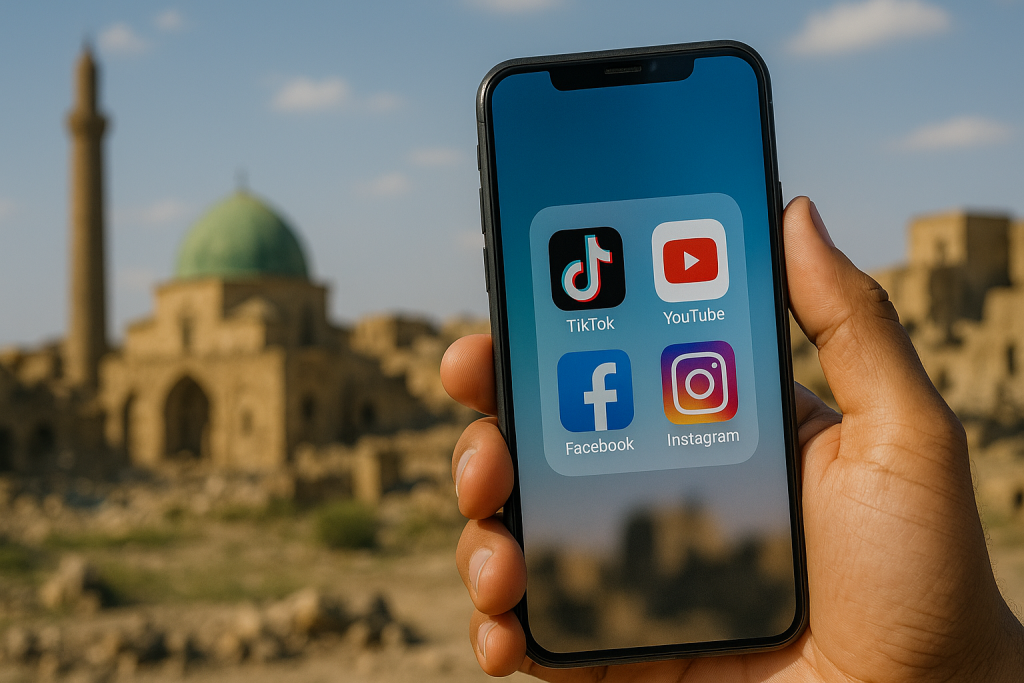
Social media use in Iraq is widespread and rapidly growing. At the start of 2024, Iraq had 31.95 million social media users, equivalent to 69.4% of the population. This is a huge jump from the previous year – social media users were up by +7.7 million (+31.5%) vs. early 2023. (It’s worth noting some of this increase is due to improved data sources and possible removal of duplicate accounts, per DataReportal’s methodology updates.) In any case, more than two-thirds of Iraqis are now on social platforms. The vast majority access social networks via mobile, given the country’s mobile-first internet landscape.
Facebook remains a key platform but is no longer the largest by reach. In early 2024, Facebook had 19.30 million users in Iraq – about 42% of the population (or 62% of those 13+ eligible age). Facebook’s user base grew a modest +7.5% in 2023. Notably, TikTok has surged to the forefront: ByteDance’s ad data reports 31.95 million TikTok users (aged 18+) in Iraq. This suggests TikTok’s reach among adults is on par with the total social media figure – an astonishing 123% of Iraq’s 18+ population (indicating some under-18 users likely lie about their age). TikTok’s rise has been explosive, with ad reach growing +33.8% in one year. Similarly, Instagram is very popular, with 18.25 million users in early 2024 (about 39.7% of the population). Instagram saw a +30.4% jump in ad reach during 2023, reflecting fast-growing adoption. YouTube is also widely used as a video platform; Google’s data shows 22.80 million YouTube users in Iraq, ~49.6% of the population. However, YouTube’s ad-reach actually dipped slightly (−6.2% in 2023), perhaps due to measurement changes or users shifting some attention to TikTok and Facebook videos.
Among messaging and youth-oriented apps, Snapchat has a significant Iraqi audience of 17.74 million (38.6% of population). Snapchat’s ad reach grew +10% last year, indicating double-digit growth, though it still trails Instagram. Twitter (X), on the other hand, is comparatively niche with 2.55 million users (about 5.6% penetration) – it’s used by a smaller segment (often for news and niche discussions) and grew slowly. LinkedIn has around 1.9 million members (4% of population), mainly professionals.
In terms of demographics, Iraq’s social media audience skews heavily male. Approximately 68.3% of social media users are male vs. 31.7% female. This gap reflects broader societal factors – internet access and cultural norms result in higher male participation online, especially outside urban areas. For example, on Facebook the ad audience is ~72% male, and on LinkedIn over 80% male. The average age of users is relatively young: with a median age of only ~21 in Iraq’s population, most social media users are youth and young adults. Platforms like Instagram, Snapchat, and TikTok are particularly popular among teenagers and people under 30. Facebook’s user base is slightly older on average but still includes millions of youths.
Usage patterns are intensive. Iraqis spend a substantial amount of time on social media daily (global data suggests ~2.5 hours per day on social platforms, and Iraq likely mirrors this high usage given the youthful, mobile-centric population). The year 2023 saw booming growth on visual and short-video platforms: TikTok and Instagram gained users at extraordinary rates, fueled by trends in entertainment and influencer content. Even Snapchat – which has been stable globally – expanded in Iraq with +10% user growth, possibly due to its popularity for sharing videos among friends and its strong base in the Kurdistan region. Facebook grew more slowly, suggesting it is nearing saturation among older cohorts, and some younger users prefer newer platforms. Interestingly, Facebook’s own data noted a slight decline in reachable users in late 2023 (a drop of –5.6% between Oct 2023 and Jan 2024), perhaps due to cleaning out duplicate accounts or users shifting activity elsewhere. YouTube remains a staple for content consumption (music, shows, how-to videos) but faces competition from TikTok for short-form video attention.
In terms of content, Iraq’s top social platforms each serve different needs: Facebook is used for general social networking, news, and community groups; Instagram for photo/video sharing and following celebrities/brands; TikTok for viral short videos and entertainment; YouTube for longer videos and music; Snapchat for quick friend updates and regional storytelling; Twitter (now X) for news, politics, and tech discussions among a small crowd; and LinkedIn for professional networking among the educated workforce. Social media advertising reach data underscores these usage levels: for example, Facebook’s ad reach equals ~41.9% of Iraq’s population, Instagram’s 39.7%, TikTok’s ~88% of internet users, and Snapchat’s ~38.6%. In fact, 88% of all internet users in Iraq use at least one social platform. Social media has essentially become the primary online arena for Iraqis – for communication, entertainment, and increasingly for commerce (many businesses use Facebook/Instagram for marketing and sales inquiries).
Looking at trends from 2023 to 2024, the clear winner in growth is TikTok – its massive +33% expansion indicates that short-video content resonates strongly with Iraqi audiences. Instagram’s +30% growth also signals that visual-centric socializing is on the rise (likely aided by Instagram Reels and Stories features). Snapchat’s continued growth shows it has carved out a strong community, particularly among teens/young adults. Facebook’s relative slowdown means it’s a mature platform now, used widely but not adding millions of new users anymore. We also see the gender gap narrowing slightly on newer platforms (e.g. Snapchat ~45% female, higher than Facebook’s female share), as young women embrace apps like Instagram and Snapchat more. Overall, Iraq’s social media landscape in 2024 is vibrant and expanding, with users engaging across multiple platforms. This widespread usage has in turn attracted significant attention from advertisers and brands aiming to reach Iraqi consumers through social channels.
Digital Advertising in Iraq
Digital advertising in Iraq is a small but growing segment of the advertising market. Total digital ad spending in Iraq for 2024 is projected to be around USD $154.4 million. This includes all forms of internet advertising (search ads, social media ads, banner/display, video, etc.). While $154M is modest in absolute terms, investment in online ads has been rising year-over-year in tandem with the growth of internet users and social media. In fact, digital ad spend is expected to continue growing at double-digit rates in coming years. By one estimate, Iraq’s digital commerce market is projected to expand at +9.3% CAGR through 2028 – as e-commerce and online services grow, advertisers will correspondingly increase online marketing budgets.
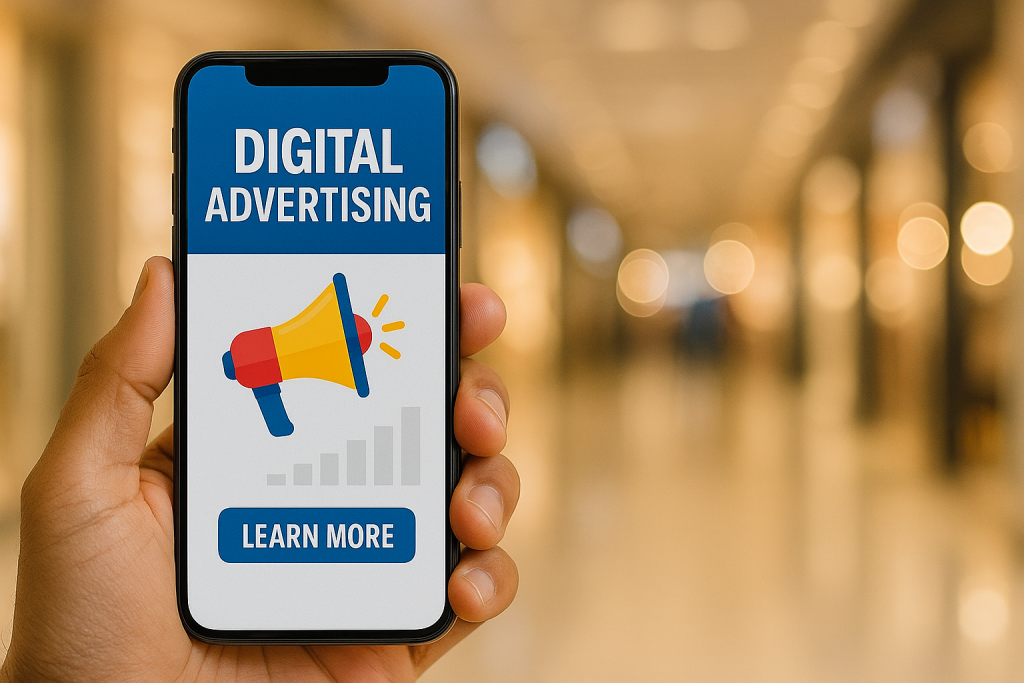
Popular digital ad channels: Given Iraq’s digital behavior, social media platforms are the dominant venues for digital advertising. Brands large and small are actively using Facebook, Instagram, and TikTok to reach Iraqi audiences. Facebook, with its millions of users, is a common advertising platform for everything from smartphones to FMCG products – Facebook’s ad tools indicate an advertiser can reach ~19 million Iraqis on the platform. Instagram’s growing base (18+ million reachable) also draws significant ad spend, especially for lifestyle and fashion brands targeting younger demographics. TikTok’s explosive popularity is attracting marketers as well; with up to ~32 million adult users reachable, TikTok is being used for viral marketing campaigns and influencer partnerships. YouTube is another key channel – pre-roll video ads on YouTube can theoretically reach almost half the population. Many Iraqi businesses place video ads on YouTube to leverage its high user engagement (YouTube is often used for music streaming in Iraq, providing ample ad inventory). Twitter (X) and LinkedIn are more niche for advertising (used mainly by news, tech, or B2B advertisers), given their smaller user base, but they do host some ad activity for targeting specific segments.
Display advertising (banner ads on websites) also contributes a share. For example, the average ad spending per user on banner ads is about $2.20 in 2024, according to Statista projections. With ~36 million internet users, that suggests banner ads account for a notable portion (possibly around one-third) of digital ad spend. Local news sites, portals, and apps in Iraq often show programmatic banner ads (many served via Google’s Display Network). However, banner display is typically less effective in reach compared to the massive scale of social media.
Search engine marketing is another component – Google is the predominant search engine in Iraq (with an overwhelming market share), so Google Ads (AdWords) for search keywords are used by companies aiming to capture user intent (e.g., telecom companies bidding on “buy SIM card Iraq”, or travel agents on “flights from Baghdad”). Precise figures for search ad spend are not published, but globally search makes up a large slice of digital ad budgets. In Iraq, businesses focusing on e-commerce or services are indeed starting to invest in SEO and Google Ads to appear prominently on search results. The State of SEO in Iraq 2025 reports that as more businesses go online, many are shifting budgets from traditional ads to inbound marketing and search optimization for better ROI. This indicates growing awareness of search advertising’s value.
Mobile vs Desktop: A significant trend is the shift to mobile advertising. With most Iraqis accessing the internet via smartphones, an increasing portion of digital ads are served on mobile devices. It’s projected that by 2028, about 46% of all digital ad spend in Iraq will be on mobile channels (up from an estimated ~35–40% today). We already see this in practice: Facebook and Instagram ads, for example, primarily hit mobile newsfeeds; TikTok is exclusively mobile; and even Google search ads often reach users on mobile browsers. Advertisers are optimizing creatives for small screens and using mobile-friendly formats (vertical videos, interactive mobile banners, etc.).
Programmatic advertising is on the rise as well. By 2028, about 55% of Iraq’s digital ad revenue is expected to be transacted programmatically (through automated real-time bidding platforms). Global ad networks and demand-side platforms (DSPs) are increasingly including Iraqi web inventory, enabling advertisers to target Iraqi users by demographics or interests in automated auctions. This mirrors global trends of moving away from direct ad buys to programmatic for efficiency and targeting.
Advertising performance and trends: Iraqi companies are gradually becoming more sophisticated in digital marketing. There’s a growing focus on measuring ROI and engagement for online campaigns. Marketers track metrics like click-through rates, conversion rates, and cost-per-action to judge what’s working. For instance, a retailer running a Facebook ad campaign can measure how many users clicked through to its online catalog, or a telecom operator can measure app downloads from a TikTok ad. This data-driven approach is fairly new in Iraq’s ad industry (which traditionally was dominated by TV, radio, and outdoor ads with limited analytics). But as digital spend grows, so does demand for analytics and optimization – agencies and businesses are using tools like Google Analytics and social media insights to refine their targeting.
One noticeable trend is the rise of influencer marketing as a form of digital advertising. Many Iraqi brands collaborate with popular social media personalities on Instagram, TikTok, and YouTube to promote products in a more organic, engaging way. Social media influencers in Iraq (from makeup artists in Baghdad to tech reviewers in Erbil) have amassed large followings, and their endorsements can significantly sway consumer behavior. This method offers an “authentic” connection and is particularly effective in reaching youth. Reports note that influencer marketing has gained traction – influencers provide credibility and help brands connect with audiences more authentically. For example, a food company might sponsor a famous Iraqi chef’s recipe video on Facebook, or a fashion boutique might partner with a TikTok style icon to showcase a new clothing line.
In terms of which sectors spend the most on digital ads: telecom and tech companies (e.g. smartphone brands) are big spenders on social media ads, as are banks and fintech apps trying to attract young customers. The e-commerce and retail sector is emerging – online marketplaces and delivery apps advertise heavily on Facebook/Instagram. Travel and education services also use digital ads to reach the diaspora and students. Political and government use of digital ads is still limited, though during election seasons some online campaigning occurs.
To summarize, Iraq’s digital advertising sector in 2024 is characterized by high social media emphasis, growing use of programmatic and mobile ads, and an overall spend of roughly $150 million – small by global standards, but rising. As more Iraqis come online and spend time on platforms like TikTok, Facebook, and YouTube, advertisers are following suit, shifting budgets from traditional media to digital. The expectation is that digital ad expenditure will grow substantially year-on-year. With connectivity improving (4G widely available and 5G on the horizon) and e-commerce expanding, digital channels will become ever more vital for reaching Iraqi consumers. Marketers in Iraq are already leveraging the unparalleled reach of social networks (Facebook/Instagram/TikTok) and the intent-targeting of Google search, while keeping an eye on metrics to maximize campaign performance. If current trends continue, by 2025–2026 digital advertising could surpass $200M, with much of the growth driven by social video ads and mobile engagement. In essence, Iraq is gradually catching up to global digital marketing trends – embracing the opportunities of online reach in a country where the median age is 20 and the smartphone is king.

